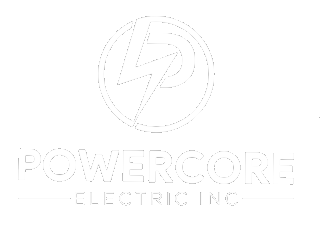Overview
The article provides a comprehensive step-by-step guide on how to effectively use a solar panels calculator to determine the appropriate number of solar panels needed for a household. It emphasizes the importance of understanding electricity usage, selecting the right calculator, and considering additional factors like roof orientation and local climate, thereby ensuring that users can make informed decisions about their solar energy installations.
Introduction
The journey toward harnessing solar energy can seem overwhelming, but understanding the essentials of solar system sizing is the first step to transforming a home into a sustainable powerhouse. Homeowners are encouraged to dive into their energy consumption patterns, utilizing past electricity bills to gauge their needs.
With residential solar systems varying in size, from 5 kW to 10 kW, the right fit can lead to significant savings and increased energy independence. As the solar industry continues to evolve, with innovative technologies and supportive policies like the Inflation Reduction Act, the opportunity to optimize energy use has never been greater.
By exploring tools like solar panel calculators and consulting with experts, homeowners can tailor their solar solutions to meet their unique circumstances, ensuring a brighter and more sustainable future.
Understanding Solar System Sizing: The Basics
To start assessing your photovoltaic setup, it’s crucial to first comprehend your household’s power usage. Review your electricity bills from the past year to calculate your average monthly usage in kilowatt-hours (kWh). This figure is essential as it establishes the foundation for estimating the power your photovoltaic systems need to produce.
Generally, home photovoltaic installations vary from 5 kW to 10 kW, tailored to satisfy different household power needs.
Once you understand these averages, you can efficiently utilize a photovoltaic calculator to ascertain the precise quantity of modules necessary for your residence. As of 2024, the typical dimensions of residential photovoltaic installations have experienced minor changes, indicating changing power requirements and the growing acceptance of photovoltaic technology. In fact, by Q3 2024, over 30 GW of installations have been completed, with projections of maintaining annual installations of 40-45 GW over the next five years, fueled by the Inflation Reduction Act.
Understanding residential panel sizing is also crucial under the 200% Rule, which can offer significant advantages for homeowners considering renewable solutions. For instance, a case study from a recent homeowner illustrates how they optimized their system size under this rule, resulting in reduced energy costs and increased energy independence.
Moreover, it’s important to note that the International Energy Agency anticipates of energy (LCOE) for photovoltaic (PV) will be 10–15% higher in 2024 compared to 2020 levels, driven by inflation and supply chain challenges. This knowledge enables you to make informed choices as you begin your journey, maximizing the advantages of your investment. To help you further, consider consulting detailed product specifications for various energy collectors available in the market, which can provide insights into their capacity, efficiency, and features, ensuring you choose the best option for your home.
Step-by-Step Guide to Using a Solar Panels Calculator
Utilizing a sunlight collector calculator is very easy! Follow this friendly step-by-step guide to get started:
- Gather Your Electricity Usage Data: First things first, pull out your electricity bills and note your average monthly kWh usage. This number will be the backbone of your energy calculations.
- Select the appropriate number of solar panels calculator by going online and locating a photovoltaic calculator that meets your requirements. Seek one that is easy to use and enables you to enter your power requirements along with your location—after all, efficiency can differ based on where you reside. As the renewable energy sector is projected to grow significantly, with global manufacturing capacity expected to reach nearly 1,000 GW in 2024, selecting the right tool is more important than ever.
- Input Your Data: Once you have your calculator, input your average monthly electricity usage. Some calculators might ask for your location too, helping to provide more accurate estimates based on how much sunlight you can expect throughout the year.
- Review the Results: After entering your details, the number of solar panels calculator will analyze the information and estimate how many panels you’ll need to cover your energy usage. You might also see an estimate for the total system size in kilowatts (kW).
- Consider Additional Factors: Don’t forget to think about other important elements that can influence your energy requirements. Roof space, the efficiency of the panels, and any potential shade from nearby trees or buildings can all influence how many panels you ultimately require. Furthermore, understanding battery options—such as lithium-ion versus lead-acid batteries—and inverter choices, including string inverters and microinverters, can optimize your system’s performance. With many installers expressing optimism for 2024 and 54% expecting increased sales, understanding these factors can help you make informed decisions in a recovering market.
- Consult with a Professional: Finally, it’s always a good idea to chat with a panel installation specialist. They can help you review your calculations and provide personalized recommendations based on your unique situation. This is particularly important for Long Beach renters, who may face different regulations and incentives compared to homeowners. As noted, “I also love how the addition of the anti-slip rubber feet makes the calculator stay in place while I’m typing away on it,” highlighting the importance of choosing a reliable calculator.
By following these steps, you’ll be well on your way to utilizing a number of solar panels calculator efficiently, which will help you find the appropriate quantity of modules for your residence while considering optimal power storage options and the best practices for choosing inverters.
Common Factors Affecting Solar Panel Needs
When it comes to determining how many photovoltaic modules you’ll require, several key factors come into play:
- Geographic Location: Your area’s sunlight exposure is crucial. For instance, areas enjoying plentiful sunlight will need less equipment to reach the same power production in comparison to those in overcast locations. This insight underscores the importance of understanding your specific geographic advantages. In fact, as noted globally, effective utilization of sunlight power can lead to significant independence in power sources and cost savings, with water heating systems potentially saving homeowners between $400 to $600 annually on utility expenses.
- Roof Orientation and Angle: The direction and slope of your roof significantly affect sunlight absorption. South-facing roofs typically gather the most power, whereas east or west-facing roofs might require extra units to equal production. To optimize your photovoltaic system output, you should use a number of that considers the arrangement of your residence when organizing your installation.
- Efficiency of Your Home: A properly insulated dwelling with high-efficiency appliances will inherently require less power, indicating you may need fewer photovoltaic units. Conducting an energy audit can reveal opportunities for improvement, ultimately enhancing your home’s efficiency and helping you determine the number of solar panels calculator needed to decrease the quantity of units required. High-efficiency setups not only deliver improved performance but also result in reduced operational expenses over time.
- Local Climate: The weather where you reside can significantly influence photovoltaic performance. Frequent cloud cover, heavy precipitation, or other weather patterns can hinder efficiency. Being aware of these local conditions allows you to adjust your calculations and expectations accordingly. Interestingly, in areas with varied climates, floating photovoltaic installations have demonstrated advantages, reducing water evaporation and enhancing cooling, leading to improved efficiency. Studies suggest that adjusting the height of the coolant reservoir in these setups can improve cooling efficiency, resulting in a 17.84% rise in electrical performance compared to designs lacking cooling.
By taking these aspects into account, you can make knowledgeable choices regarding your photovoltaic installation, customizing it to your home’s distinct requirements and surroundings. This understanding not only helps in optimizing installation and ensuring long-term efficiency but also contributes to a more sustainable future.
Evaluating the Output of Your Solar System
Once your energy panels are up and running, monitoring their output is essential for maximizing your investment. Here’s a friendly guide to help you monitor your system effectively:
- Install Monitoring Software: come equipped with handy monitoring software that tracks energy production. Make sure you set this up to access real-time data about your panels’ performance.
- Check Monthly Reports: Take a peek at your energy production reports every month. This will enable you to observe how much power your system is actually producing compared to what you anticipated based on your initial calculations from the number of solar panels calculator.
- Compare with Energy Bills: Cross-reference your solar production data with your electricity bills. This comparison will give you a clear picture of your savings. If you notice that your savings are significantly lower than anticipated, it might be time to call in a professional for a closer look.
- Look for Performance Issues: Be on the lookout for any notable drops in energy production. Such declines could indicate problems such as dirt buildup on your surfaces or shading from overgrown trees. Keeping your panels clean is crucial, as even minor debris can block sunlight and hinder performance. As noted by experts, “Did you notice a significant drop in energy production? This issue can be due to a variety of factors, with the most common being dust and debris buildup.” Regular maintenance is your ally in ensuring that your number of solar panels calculator operates efficiently and effectively.
- Consider Innovative Cleaning Solutions: As you observe your setup, explore new cleaning technologies or services that can help maintain your panels. Researchers from the Indian Institute of Engineering Science and Technology have developed a model to estimate dust accumulation based on various environmental factors, which can guide your maintenance schedule. This model is crucial for both rooftop and commercial plants, taking into account particulate matter concentration, tilt angle, and weather parameters.
As the photovoltaic sector continues to flourish, with forecasts indicating that this form of energy will represent 67% of the increase in renewable power capacity in 2023, including nearly 200 gigawatts of new additions, staying updated about your energy setup’s performance is more vital than ever. Experts forecast a 40% rise in installations of renewable energy sources between 2023 and 2027, highlighting the necessity for effective monitoring. Remember, the median loss rate for photovoltaic system performance is 0.75% per year, with 90% of systems encountering less than a 2% loss each year.
Monitoring your output not only helps you save money but also contributes to a sustainable future! As emphasized by the International Renewable Energy Agency (IRENA), education and training programs are vital to prevent skill gaps in this growing industry.
Consulting with a Solar Installation Specialist
While the number of solar panels calculator is useful for estimating your needs, the insights from a Powercore Electric installation expert are truly invaluable for California homeowners. Here’s why reaching out to our local experts can make all the difference:
- Personalized Recommendations: Our specialists can assess your home’s unique characteristics—such as roof orientation and shading—offering tailored solutions that a generic calculator simply cannot provide. With our local expertise in Northern and Southern California, we understand the distinct energy needs of your community.
- Navigating Incentives and Rebates: The landscape of renewable energy incentives can be complex and ever-changing. Our team is here to guide you through various options, ensuring you capitalize on significant savings opportunities for your installation. Considering that off-grid photovoltaic setups typically vary from $15,000 to $35,000 for a basic configuration, expert advice is essential for optimizing your investment.
- Unmatched Quality Craftsmanship: Proper installation is vital for enhancing both the efficiency and longevity of your panels. At Powercore Electric, our professionals ensure every aspect is set up correctly, minimizing potential issues down the line. Companies that interact with our professional energy consultations are 30% less likely to face financial or operational challenges, emphasizing the significance of expert participation.
- Sustainable Energy Solutions: Our energy-efficient installations are designed to minimize your carbon footprint while maximizing savings. By choosing Powercore Electric, you not only invest in your home but also contribute to a cleaner environment for future generations.
- Ongoing Support: After installation, our specialists provide maintenance and support services, helping you keep your system running optimally for years to come. Your satisfaction is our priority, and we’re dedicated to a customer-first approach that guarantees your experience is seamless and stress-free.
As Matt Huston, President of Huston Electric, emphasizes, the importance of personalized energy solutions cannot be overstated. With Powercore Electric’s professional guidance, you’ll not only improve your efficiency but also make informed decisions about your investment. For instance, our commercial energy consultants oversee the entire project from assessment to installation and maintenance, ensuring minimal disruption to your operations.
Don’t simply rely on our claims; listen to our pleased customers who have changed their consumption habits with our customized solutions. Connect with to explore your options and ensure you get the most out of your solar energy journey.
Conclusion
Understanding solar system sizing is a vital step for homeowners eager to embrace sustainable energy solutions. By starting with an analysis of energy consumption and utilizing tools like solar panel calculators, individuals can effectively determine their unique solar needs. With residential systems ranging from 5 kW to 10 kW, the right size can significantly enhance energy independence while reducing utility costs.
Several factors play a role in optimizing solar panel installations, including:
- Geographic location
- Roof orientation
- Energy efficiency of the home
By considering these elements, homeowners can tailor their solar systems to maximize output. Furthermore, ongoing monitoring of system performance ensures that investments yield the expected benefits over time.
Consulting with solar installation specialists can elevate the experience, providing personalized recommendations and navigating the often complex landscape of incentives and rebates. With expert guidance, the transition to solar energy becomes not only feasible but also advantageous, paving the way for a sustainable future. Embracing solar energy is more than just a trend; it is a meaningful investment in both personal savings and the health of the planet.


